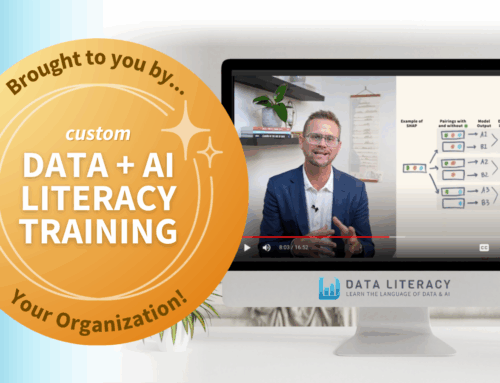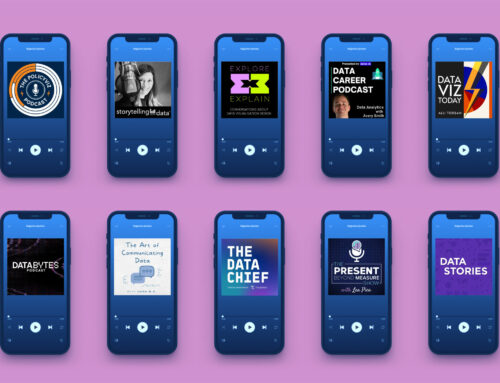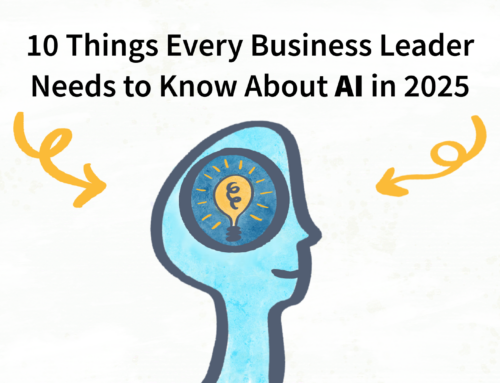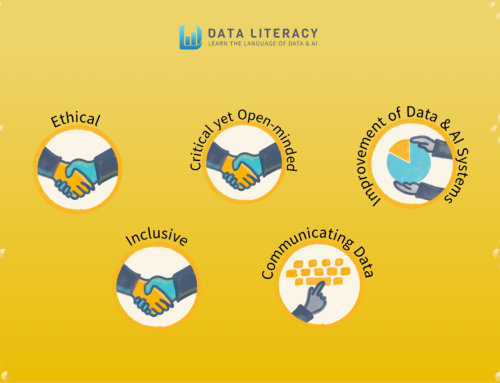What the Best AI Literacy Programs Have in Common
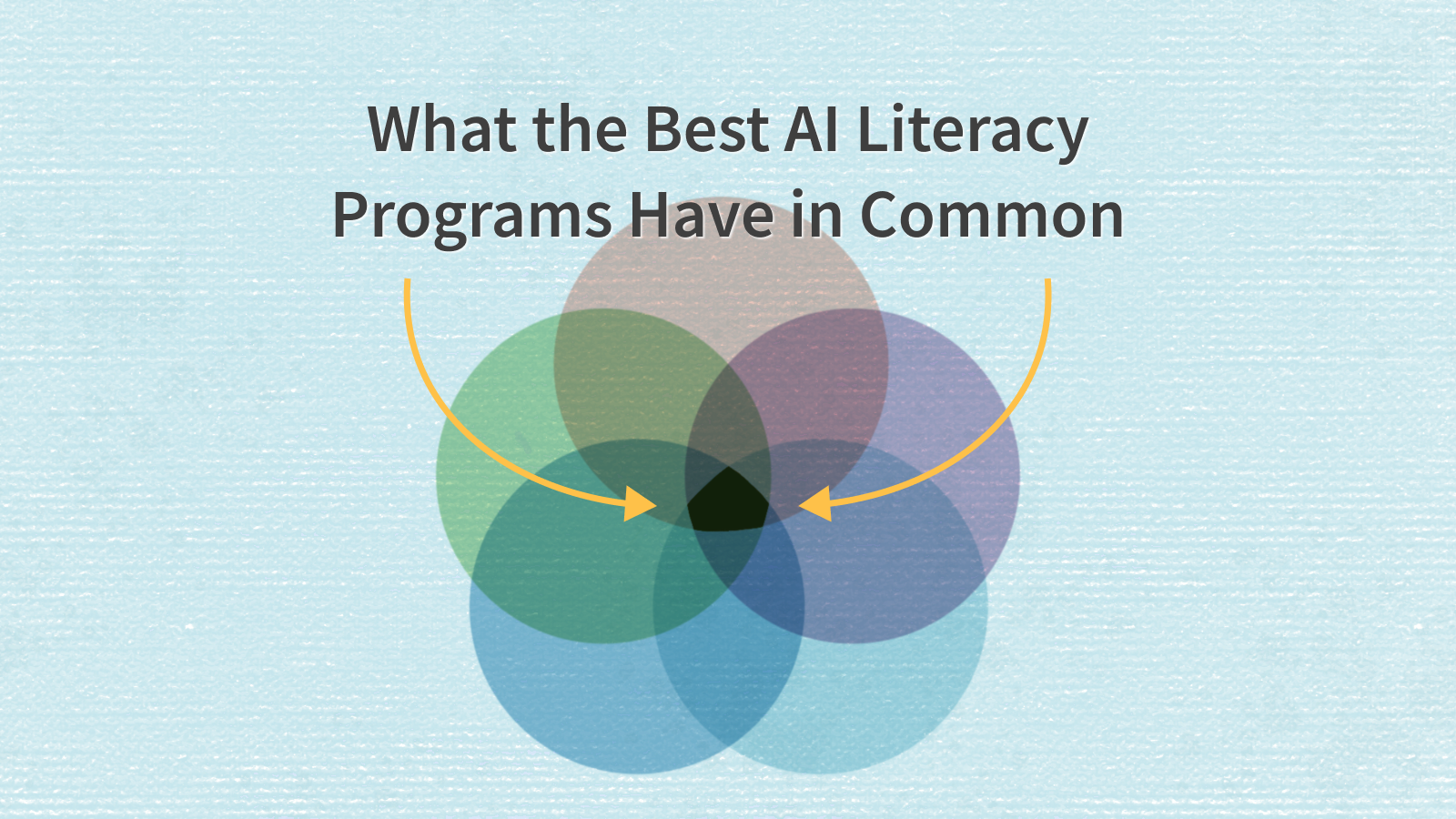
Note: a version of this article was first published for Forbes Business Council on April 15, 2025.
Why are organizations scrambling to design and deploy AI literacy programs right now? Well, some of them are because it’s mandated by law. The EU AI Act went into effect on February 2, 2025, and enforcement will begin on August 2, 2025. Article 4 of the EU AI Act requires companies to “take measures to ensure, to their best extent, a sufficient level of AI literacy of their staff and other persons dealing with the operation and use of AI systems on their behalf.”
But others are implementing AI Literacy programs simply because it makes good business sense. It’s an investment in the organization’s ability to remain competitive, and to meet their goals in the face of rapid technological changes.
At Data Literacy, we’ve had the privilege of working with some of the largest and most influential organizations in the world over the past two years to help them design and implement successful data and AI literacy programs. We’ve learned a lot from these engagements, and I’d like to share seven best practices that surface over and over when looking at well-designed AI literacy programs.
1. They Feature Tailored Learning Experiences
Obviously, a one-size-fits-all approach won’t work. Smart organizations create custom learning pathways based on each employee’s role, the AI tools they’ll use in that role, and their level of knowledge and expertise with those tools.
A copywriter using an AI chatbot to draft content for a marketing campaign won’t need the same training as a data scientist who’s fine-tuning machine learning algorithms for a software product. If it doesn’t fit, you must re-kit.
2. They Focus on Practical Application
Theoretical books and courses aren’t going to get the job done. Workers need to see industry-specific examples and case studies, and they need to be given hands-on exercises that help them solve problems similar to what they’ll see on the job.
It’s critical to train them on the AI tools that they’re actually going to use. For example, different foundational large language models (LLMs) like OpenAI’s GPT-4, Anthropic’s Claude 3, and Meta AI’s Llama 3 may have a lot in common, but there are plenty of differences in how they’ll respond to prompts. Be sure to provide practical training using the tools your workers actually have at their disposal.
3. They Utilize Multiple Channels
The best AI literacy programs involve more than just long-form training courses. They include many types of learning experiences, from traditional educational methods to more innovative approaches. Here’s a list of eight categories of delivery methods to consider:
- eLearning modules
- live, instructor-led training (ILT)
- microlearning, or “bite-sized” learning
- lunch & learns, peer learning circles
- on-the-job training (OJT) and shadowing
- mentorships and apprenticeships
- simulations and gamification
- intranet-based knowledge hubs
Approach this thoughtfully and choose the right channels for your group. Then, give them a roadmap to navigate the multifaceted terrain.
4. They Champion Responsible AI
As powerful as they can be, neither data nor AI are perfect. Because of this fact, there are risks associated with using AI. Solid AI literacy programs don’t ignore this fact, nor do they relegate it to a “CYA” footnote. Instead, they shine the spotlight on the various ways AI can go awry, from hallucinations in generative AI to biased outcomes in traditional AI.
The best AI literacy programs don’t merely point out the many types of pitfalls; they teach employees how to avoid them. Furthermore, they mesh with existing data and AI governance initiatives that protect data privacy and security. If you want workers to benefit from AI’s upside, you must make sure they’re managing its downside.
5. They Measure Progress & Continually Improve
Every great change management program measures and tracks progress. For an AI literacy program to fail to do this would be hypocritical. We all must practice what we preach.
What kinds of metrics does a good AI literacy program employ? There are many key performance indicators (KPIs) that can be included in a balanced scorecard, including:
- Quantitative metrics like training completion rates or test scores
- Qualitative metrics like satisfaction scores or confidence levels
- Impact metrics like estimations of business outcomes or ROI
Once the most important metrics have been identified, set reasonable goals around them, and report out to executive leadership on how well the team is doing relative to them. Measure, analyze, improve, repeat.
6. They Accommodate Various Learners
In any large organization, and even relatively small organizations, learners will have different needs and preferences. They’ll have different native languages, learning styles, and adaptive abilities.
The best AI literacy programs take this spectrum of needs into account, and they find ways to accommodate them, and to meet people where they are, rather than demanding that they do what may not be possible for them. Accessibility matters, whether or not it’s en vogue.
7. They Collaborate With External Partners
As with any major corporate initiative, AI literacy programs involve many build versus buy decisions. At the beginning, the team will need to decide whether they’ll develop their own strategic plan or hire a consultant to guide them through an established process. After the role-based learning paths have been mapped out, will the team create their own eLearning modules, or buy something off the shelf? For live sessions, will the team employ in-house trainers, or contract with a third party to lead the training?
These are just a handful of the decisions that must be made. Often, the answer isn’t “either / or,” but rather, “both.” In addition, the best AI literacy programs find ways to benefit from, and contribute to, partnerships and cooperatives in industry and in academia. You are ultimately in charge, but there’s no need to go it alone.
Conclusion
If you’re starting an AI literacy program for your own organization, take heart! Many others have already done so, and the lessons they’ve learned, often the hard way, are out there for all of us to benefit from.
The best thing you can do, once you’ve established executive sponsorship and designated a program champion, is to connect with others that have been down that road before.
With the right advisers, you’ll succeed.

